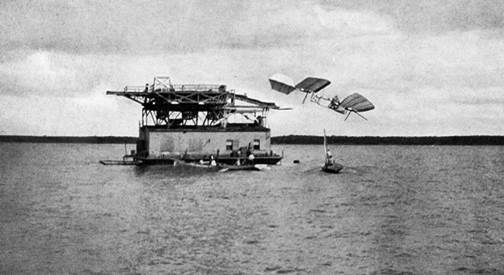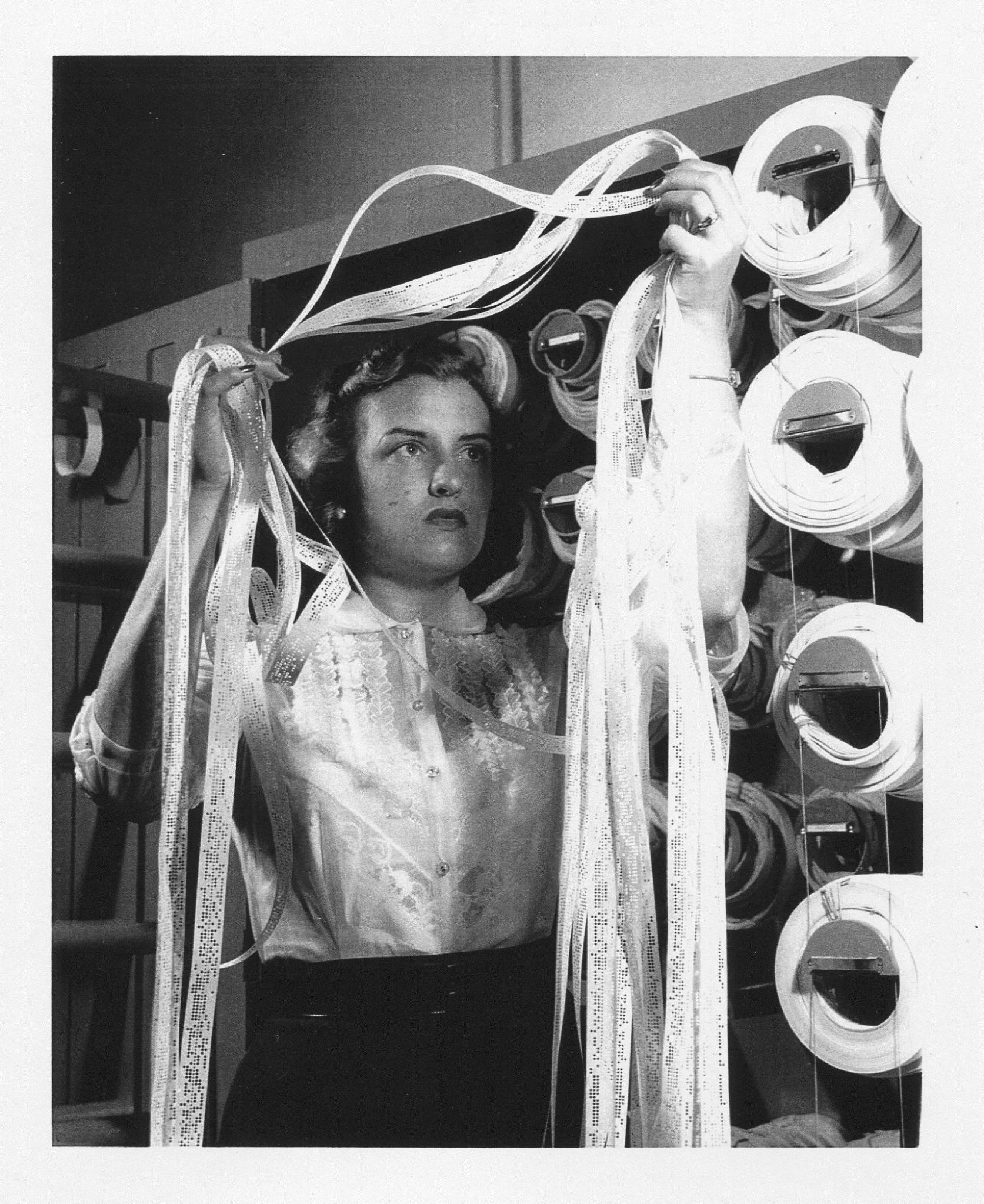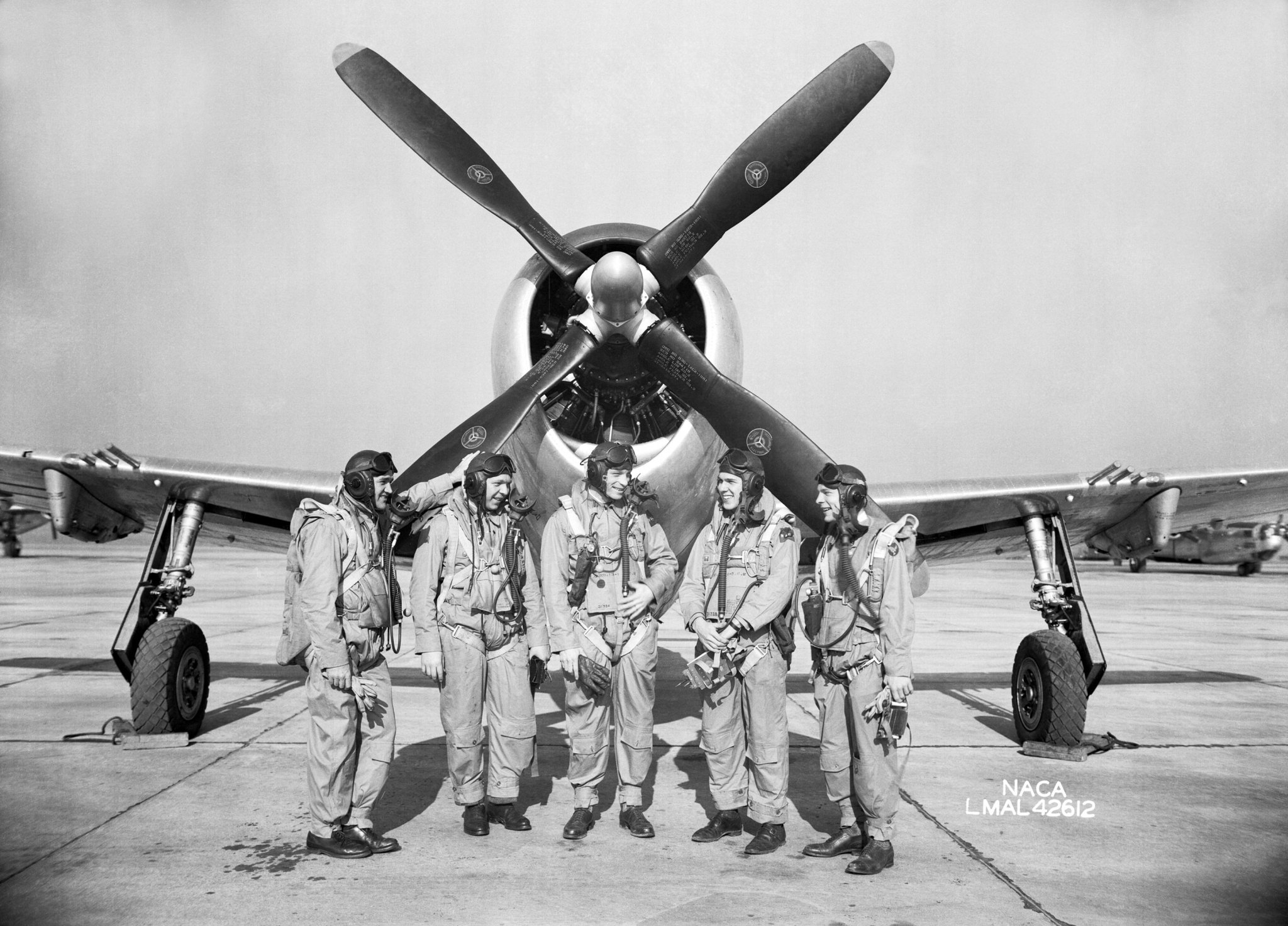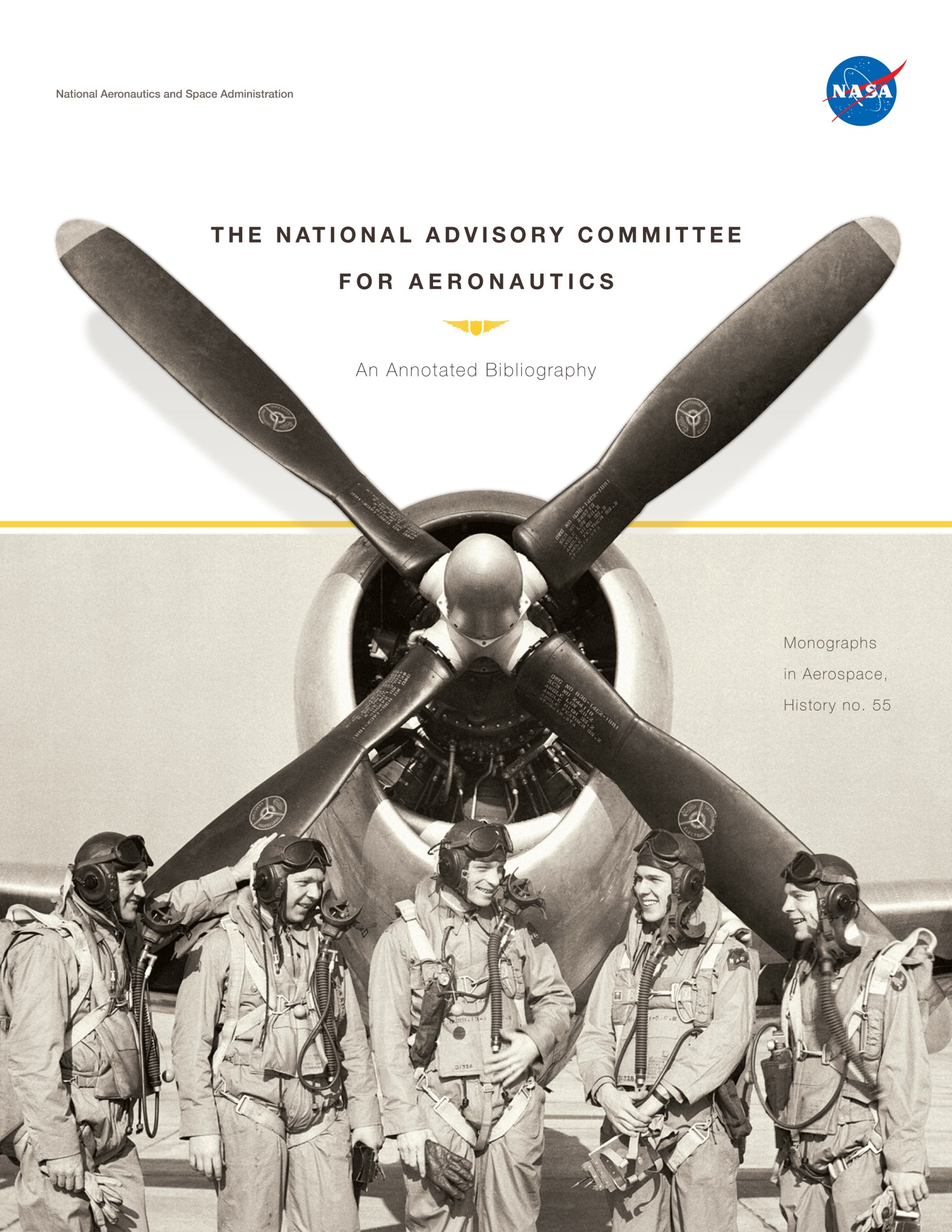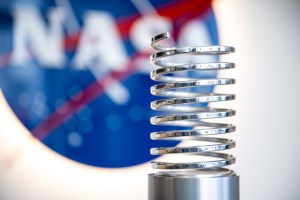If Charles Walcott, one of the first members of the National Advisory Committee for Aeronautics (NACA) had his way, instead of airplanes today we would all be flying in “Langleys”.
Tom Crouch, the senior curator for aeronautics at the National Air and Space Museum (NASM), told the story March 3 during the first day of a two-day history symposium at the museum marking the NACA centenary. The NACA — founded on March 3, 1915 — was the main institutional basis for creating NASA in 1958.
Samuel Langley was an early aviation pioneer whose “aerodrome” design for a piloted, heavier-than-air aircraft had failed a second test flight just days before the Wright Brothers succeeded with their “flying machine” on Dec. 17, 1903.
At the time, Langley was Secretary of the Smithsonian Institution. When he died in 1906, it was Walcott who succeeded Langley in 1907. “Walcott highly respected Langley and did all he could to rehabilitate the reputation of his friend and predecessor,” said Crouch.
Inspired by the fact that rigid, lighter-than-air airships were called Zeppelins — named for the Count who had pioneered their development in Germany — Walcott wrote a letter to the American Aeronautical Society in 1915 suggesting the still-new flying machine be called a Langley.
It was not to be. In 1916, the NACA formally adopted use of the word “airplane” in its Technical Report No. 9, which laid out the official nomenclature to be used with many other aviation-related words “peculiar to this subject.”
So was Walcott really serious about calling airplanes “Langleys”?
Maybe. Maybe not.
“I think it was only partly tongue in cheek,” Crouch said.
Of course, Langley’s role in aviation is memorialized to this day as the namesake for NASA’s Langley Research Center in Virginia—the first research center of the NACA that officially opened for business in 1920.
NACA Role in Aviation and NASA
The story about Walcott and Langley was just one of many recounted by some of aviation’s top historians and authors gathered for the event in the NASM’ Moving Beyond Earth gallery.
There they discussed the legendary contributions of the NACA’s most colorful characters and its innovative technologies.
Some examples: Eastman Jacobs’ determination of the proper wing shape for laminar flow; John Stack’s measurements of a wing’s behavior at high speed, which helped give rise to the myth of the sound barrier; Virginia Tucker and her female colleagues who worked as human computers; and John Jay Ide, the NACA’s liaison in Europe who kept a close eye on aeronautics research done by the Germans and others before World War II, helping to guide the NACA’s research efforts at that time.
There’s also the story of Jack Reeder, a legendary NACA test pilot who flew 235 different types of aircraft, including 61 helicopters as the NACA’s first helicopter pilot. He also flew eight Vertical Takeoff and Landing (VTOL) airplanes.
Reeder had what Auburn University historian James Hansen called “the real right stuff.”
Reeder wasn’t the kind of mythological pilot who was a swashbuckling, handsome knight of the air, like those made famous by movies of the 1930s and 1940s. Instead, like his NACA colleagues, he was a true research pilot; what Hansen called “a man of science, an engineer working in the cockpit to advance our understanding of flight.”
“They did not try to break records, or put their hides on the line,” Hansen said, alluding to another breed of pilots best exemplified by the way Chuck Yeager—the first pilot to fly faster than the speed of sound—was portrayed in the movie “The Right Stuff.”
In fact, when Hansen — who authored “First Man,” the official biography of Neil Armstrong, the most famous of the NACA pilot fraternity—first interviewed Armstrong for the book, one of the things Armstrong told him was “Jack Reeder was the best test pilot I ever knew.
These people and their stories weren’t necessarily representative of the most important technical achievements of the NACA—such as the NACA cowling, which won the prestigious Collier trophy—yet the symposium presenters shared their stories to highlight its rich narrative.
Speaking about the legacy of the NACA in its entirety, NASA Administrator Charlie Bolden opened up the symposium by saying “We wouldn’t be here without the first steps taken by those pioneers of the NACA.”
Those aeronautical pioneers, conducting research at its world-class laboratories and wind tunnels across the country, orchestrated fundamental advances in aeronautics that enabled victory in World War II, spawned the world’s leading civil aviation manufacturing industry, propelled supersonic flight, supported national security during the Cold War, and laid the foundation for modern air travel and the space age with NASA’s creation in 1958.
The NACA Culture
A recurring theme during the symposium, evident in both the presentations and the questions and discussion that followed, considered the research culture of the NACA, and whether or not the culture remains within NASA today.
Roger Launius, a former NASA chief historian and currently a curator at the NASM, talked about how NACA researchers were allowed to come up with their own ideas and pursue their line of work with a great deal of autonomy.
With a question stated, a project would be organized to answer the question, oftentimes involving public and private partnerships. Data would be gathered, analyzed, and results shared publicly and distributed as widely as possible.
The results were published in NACA Technical Reports, which became very popular around the world—a must-read source for understanding the latest aeronautical developments.
Although the NACA worked in relative obscurity, its reputation was well known in engineering circles, so much so that “if you were interested in aviation, the gold standard was to work for the NACA,” Launius said.
That may have been true for the NACA of the 1920s and 1930s, but symposium presenters offered different views of the organization as it operated following World War II through to 1958 when the NACA became NASA and the focus shifted from aviation to space.
Some suggested the spirit of the NACA during the pre-war years—what some called the Golden Age of aeronautical research—continued through the post-war period and on into present-day NASA.
Indeed, today’s aeronautical innovators within NASA continue to follow the NACA model of organizing projects around problems to be solved, conducting research to gather data, analyzing that data and sharing research results—often under public-private partnerships.
Yet others lamented that the NACA during the 1950s was seen as an aging organization that had difficulty attracting new, younger talent, and perhaps was vulnerable to being shut down or being allowed to fade into history.
NASA chief historian Bill Barry suggested that this negative perception of the NACA might have been a result of the fact that, during WWII, much of the NACA’s work was with the military and classified. So, during the post-war years, the NACA’s culture of keeping things close to the vest, and not being able to talk about who was doing what, likely colored what people thought about the organization.
Perhaps to improve that perception, in 1948 the NACA hired its first public information officer, Walter Bonney.
Bonney’s job was to convince industry, Congress and the American people that the NACA was needed to ensure defeat of communism.
It was the right message at the right time, because despite the perception, rightly or wrongly, that the NACA was an aged organization that may have outstayed its usefulness, in 1955 President Eisenhower was convinced to give the NACA more money.
And then the launch of Sputnik on Oct. 4, 1957 changed everything. In response to the technological and idealogical threat from the Soviet Union, space became the new high ground in the Cold War and within a year the NACA had become the NASA.
Today as Tomorrow’s History
The rest, as they say, is history.
But that’s not quite true. In the final panel of the NACA centenary symposium, historians considered what “the next assignment” should be for those whose careers involve documenting and interpreting our past activities in air and space.
The consensus was there is still more story to tell that encompasses the entire life of the NACA and NASA, with at least one historian suggesting greater attention is needed on aviation in the period following the end of Apollo.
Peter Westwick, from the University of Southern California, noted that in the beginning, aviation was an appealing target for historians given the revolutionary changes in society it both promised and delivered.
Westwick recalled that when the NACA started in 1915, people still rode horses to get around in rural areas. Railroads were entrenched as the modern method to travel long distances and the automobile, despite its slowly growing popularity, was something no one really knew what to do with.
Aviation stood out, just as spaceflight did when the NACA became NASA. The consequence, according to Westwick, is that the past 40 years of aviation research largely have been ignored by scholars because “we have been blinded by the space age, and historians have been drawn to space like moths to a flame.”
Nevertheless, NASA’s history office has been actively publishing material to fill in those gaps with books, annotated bibliographies, and other special publications—most of which are freely available online from NASA.
Still, there is plenty of material about the people and technical accomplishments of the “first ‘A’ in NASA” to keep academics busy. In doing so they are likely to find echoes of the original NACA still present among the agency’s modern aeronautical enterprise.
“The legacy of the NACA, the thing we should really celebrate, is the sense, the spirit, and the focus the organization had on the future. I think that spirit still exists,” said Mark Lewis, Director of the Institute for Defense Analyses’ Science and Technology Policy Institute.
“There are plenty of problems still to solve.”



























![Speakers and Panelists at the "NACA [National Advisory Committee for Aeronautics] Centenary: A Symposium on 100 Years of Aerospace Research and Development" pose for a group photo.](https://www.nasa.gov/wp-content/uploads/2015/03/bolden-group-shot-20150303-1ag0938.jpg?w=2048)
